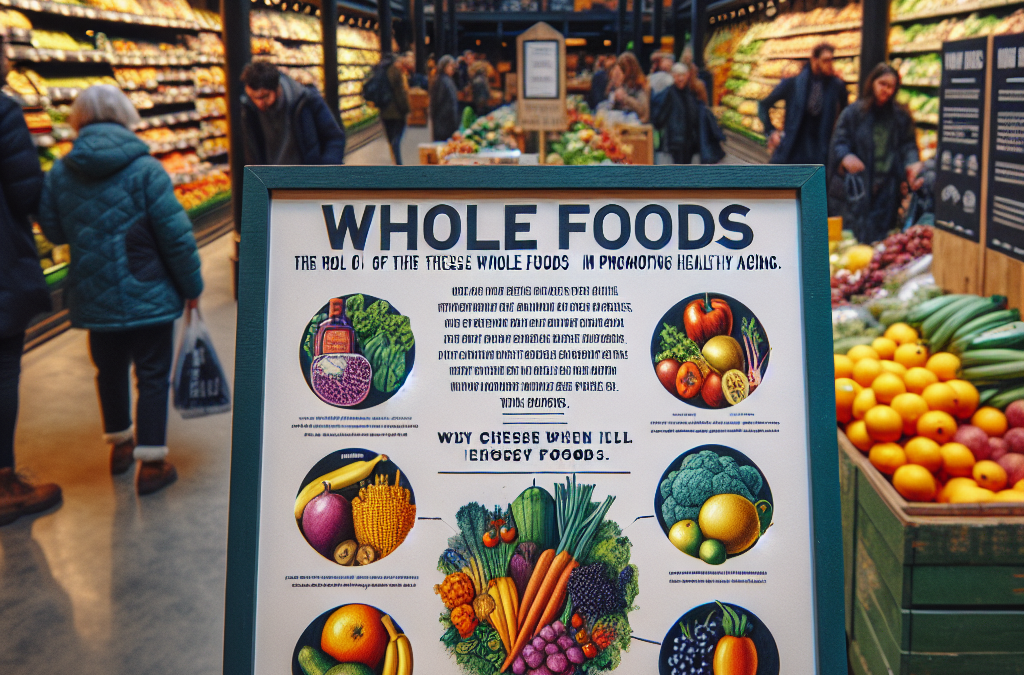The Importance of Nutrient-Dense Foods
Understanding Nutrient Density
One of the first things I realized on my journey to healthy aging is the concept of nutrient density.
It’s all about packing more nutrients into fewer calories. Trust me, when I started focusing on this
approach, my meals transformed entirely. Instead of munching on empty calories, I began swapping
in foods that offered me vitamins, minerals, and antioxidants with every bite.
I discovered that foods like leafy greens, berries, nuts, and lean proteins are not just healthy;
they also nurture my body in ways I’m still discovering! Incorporating nutrient-dense foods into my
daily routine has been like giving my body a hug from the inside out.
A good next step? Try picturing your meals as a beautiful palette of colors—each shade representing
different nutrients. Experimenting with new whole foods turned my kitchen into a creative space
rather than a chore, and I loved every bite of it!
Whole Grains: The Energy Boosters
Why Whole Grains Matter
I can’t stress enough how whole grains changed the game for my energy levels. You see, whole grains
like quinoa, brown rice, and whole oats offer me complex carbohydrates that fuel my mornings and keep
me going throughout the day. Switching from white bread to whole grain options seemed like a small
fix, yet the impact has been monumental!
Plus, whole grains are fiber-rich, which is fantastic for maintaining healthy digestion and a happy
gut. Keeping my digestive system on point has been a major contributor to feeling youthful and spry
as I age.
A little tip? Try substituting refined grains for whole grains in your favorite recipes. You’d be
amazed at how easy it is and how much better you feel afterward. Not to mention, your meals will
taste way more wholesome!
Healthy Fats: Fueling the Body
Incorporating Healthy Fats
Now, let’s talk about the concept of healthy fats. For a long time, I was stuck in the mindset that
all fats were the enemy. But, boy, was I wrong! Healthy fats, found in foods like avocados, nuts,
seeds, and olive oil, are essential for brain health and overall well-being. They help keep my mind
sharp, something I really value as I age.
I started integrating healthy fats into my meals with ease. A drizzle of olive oil over my salad or
a handful of nuts as a snack works wonders. These little tweaks have elevated not just the flavor,
but also the satisfaction factor of my meals.
A fun way to enjoy healthy fats is by making homemade dips like guacamole or tahini. Not only is it
delicious, but it’s also an excellent way to incorporate fats while enjoying my food. Give it a try;
you won’t regret it!
Colorful Fruits and Vegetables
The Rainbow Plate Method
Let’s get colorful! I’ve started to think of my plate as a canvas, and fruits and vegetables as
the vibrant colors I get to mix. Eating a variety of colors means I’m loading up on different nutrients
my body craves. Berries, carrots, spinach, and bell peppers are some of my go-tos for making meals
pop all while keeping things nutritious.
Get an Amazing Discount on the Best Certified Organic Whole Food Supplement!
Each color represents a different set of nutrients and antioxidants. For example, dark leafy greens
support heart health, while yellow and orange fruits and veggies are great for my immune system. It’s
like a fun game, and the result is not only visually appealing but greatly beneficial for my health!
Now, I challenge you to try and incorporate at least three different colors into each meal. It’s a
great way to ensure variety and boost your nutrient intake effortlessly. Plus, who doesn’t love
eating a rainbow?
Hydration and Whole Foods
Why Staying Hydrated is Key
Hydration plays a crucial role in how we age. I realized I often overlooked it until I started
paying attention to how much water I was drinking. Whole foods, especially fruits and veggies, can
be an excellent source of hydration. Foods like cucumbers, watermelon, and oranges make staying
hydrated tasty and enjoyable.
Staying hydrated helps maintain skin elasticity, supports metabolic functions, and keeps my energy
levels in check. Plus, I’ve noticed that drinking enough water helps mitigate feelings of hunger,
making it easier to stay on track with my healthy eating.
Try starting your day with a glass of water and make it a point to carry a water bottle with you.
It’s such an easy habit to adopt, and your body will thank you for it. A little reminder: pay attention
to hydration and watch how positively it impacts your overall wellness!
FAQs
1. What are whole foods?
Whole foods are foods that are minimally processed and free from artificial ingredients. They include
fruits, vegetables, whole grains, lean proteins, and healthy fats.
2. How do whole foods support healthy aging?
Whole foods help maintain optimal health by providing essential nutrients, which can reduce the risk of
chronic diseases and support overall bodily functions as we age.
3. Can I still enjoy my favorite foods while eating whole foods?
Absolutely! You can modify your favorite recipes by using whole food alternatives. It’s all about
balancing indulgence with nutritious choices.
4. How can I incorporate more whole foods into my diet?
Start by replacing processed foods in your pantry with whole food options. Plan your meals around
fruits, vegetables, whole grains, and lean proteins to naturally include them in your diet.
5. Is hydration really important for healthy aging?
Yes, staying hydrated is vital for physical and mental health, especially as we age. Drinking enough
water and consuming water-rich whole foods can significantly benefit your overall wellness.




